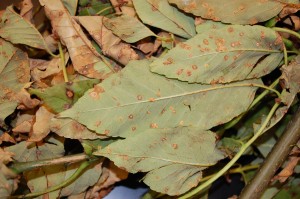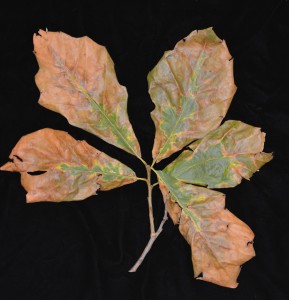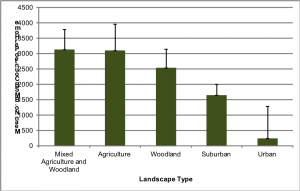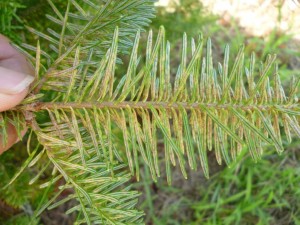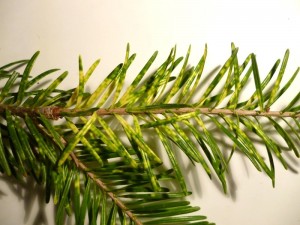Springtime 2014 seemed like it would go on forever. Temperatures remained cool for an extended period and we had plenty of moisture, which are the conditions that always result in shade tree leaf diseases. Here are a few we saw…
Landscape, Ornamentals, Nursery, and Turf Edition
Seasonal updates on ornamental, nursery, and turf pests.
Subscriptions are available via EMAIL and RSS.
Companion Website Links:
 Rutgers Turf Blog - Articles on turfgrass diseases and cultural practices for the commercial turfgrass industry. Subscription available via RSS.
Rutgers Turf Blog - Articles on turfgrass diseases and cultural practices for the commercial turfgrass industry. Subscription available via RSS.
 Rutgers Weather Forecasting - Meteorological Information important to commercial agriculture.
Rutgers Weather Forecasting - Meteorological Information important to commercial agriculture.
Soils Are Cooling – That’s Good and Bad
Recently, surface soil temperatures have been dropping below 70° F at night. While this is a good temperature range for growth of cool season grasses, it is a signal that much cooler soils are not far away. Grow of new seedings, overseedings, and turfs needing recovery will slow dramatically once soil temperatures break below the 60° F threshold. We have reached the time (October 1) where we no longer recommend seeding of most grasses except perennial ryegrass. Perennial ryegrass can be seeded as late as October 15 and still have high probability of develop a stand of turf.
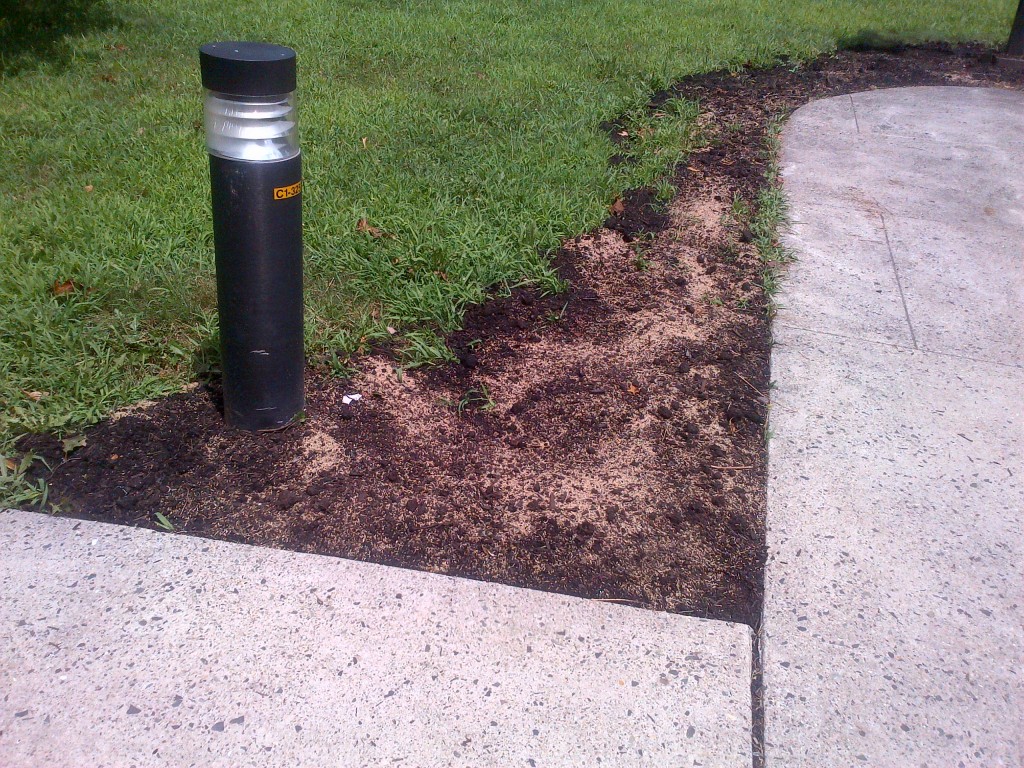
Cool weather limits the establishment of new seedings. In this photo,
poor seed to soil contact will also inhibit establishment of new turf.
[Read more…]
Landscape X-Men
The mighty hosta is no super hero, but its nemesis Hosta virus X sure is. Hosta virus X (HVX) is a rather new disease of hosta that has become a regular visitor to the Plant Diagnostic Laboratory. We get samples of hosta with the disease once or twice every summer, usually from a nursery, and we just got this year’s supply.
It’s Not Too Late
The last couple of weeks in the Plant Diagnostic Laboratory brought a flurry of phone calls regarding bacterial leaf scorch. Folks are concerned about the disease and several samples have been submitted from locations in New Jersey and the New York metropolitan area.
Volunteers Needed for Brown Marmorated Stink Bug Count
Scientists at the USDA are conducting a second year of the “Great Stink Bug Count” and are looking for volunteers from NJ! They are trying to identify characteristics of houses that brown marmorated stink bugs look for when finding overwintering sites. Last year’s count had over 200 volunteers with 44 individuals who counted every day.
The basics:
- Fill out the form
- Count the BMSB on the exterior of your home each day
- Enter in your count data
Consider participating in the 2014 Great Stink Bug Count!
September 15 – October 15, 2014
You can download particpant forms here: http://www.stopbmsb.org/2014-
Results from 2013 are the first to document factors that may be important in where bugs chose to overwinter. Last year’s results suggest that landscape factors, specifically agriculture and woodland habitats, may have the greatest influence on the number of BMSB overwintering on a house.
This data will go a long way to helping us figure out important steps to managing BMSB. They are looking for citizen scientists to help out! Please fill out the attached form and send it in if you are interested!
Beware of the Cryptomeria Scale Hiding Beneath a Transparent Cover
Armored scales are generally regarded by green industry plant managers as being one of the more difficult insect pests to control. The Cryptomeria scale (Aspidiotus cryptomeriae ‘Kuwana’) is an armored scale that is notorious for being especially difficult to detect because of the translucent waxy cover. The elongate hemlock scale species resembles this scale, but it has a waxy cover that is caramel brown in color. Although the hosts of Cryptomeria scale can potentially include numerous conifer species, they are most typically found on hemlocks & pines in the landscape and on true firs in production situations such as Christmas tree farms. The damage potential is especially high on true firs.
